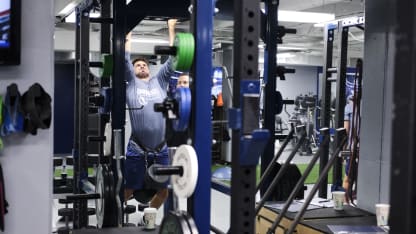Bolts task Mark Lambert to keep the team fit while away from the rink
The Lightning's director of high performance and strength coach has been tailoring individual workouts for each player to do at home

© SCOTT AUDETTE
The Lightning's director of high performance and strength coach has been tailoring individual workouts for each player to do at home

© SCOTT AUDETTE